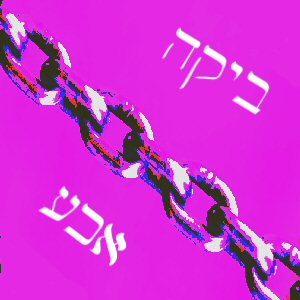The Book of Ester: The Long and Short of it
There are two versions of our Book of Esther, a long version and a short
version. The short version, is the one that appears in most Bibles
today.
The long version contains the following additional material (found in the "Apocrypha" today under the Title "The Rest of Esther" or "Additions to Esther":
10:4-11:1 Mordecai's dream
11:2-12:6 (An account of Mordecai saving the life of the king)
13:1-7 The King's letter ordering a massacre of the Jews
13:8-14 The Prayers offered by Mordecai and Esther
15:1-16 Esther, at great risk, appeals to the king
16:1-24 The second letter of the king denouncing Haman and directing his people to help the Jews
The Long version appears in Catholic and Orthodox Bible Versions.
The question is, which version is most original? Was material taken out of Esther, thus creating a shorter abridged
version? Or was material added to Esther, creating a longer version?
The Masoretic Text lacks these “additional” sections, but it is not certain that they did not exist in the original
Hebrew and Aramaic of Esther. On the other hand, the long version appears in the Greek Septuagint and in the Aramaic Peshitta.
The Book of Ester is the only canonical book of the Tanak which does not appear anywhere among the Dead Sea Scrolls, so they offer us no help in resolving this issue.
Some form of the original Hebrew and/or Aramaic may have survived in Jewish circles apart from the Masoretic Text.
Except for the King's letters all of the "additional" material appears in the Midrash Rabba to Esther.
While the "additional" sections do not appear in the Masoretic Text, they do appear in the Septuagint, and our oldest copies of Esther by far are these Greek Septuagint copies. SO are these truly "additions" to Esther? Or are they "subtractions" from Esther.
The long version contains the following additional material (found in the "Apocrypha" today under the Title "The Rest of Esther" or "Additions to Esther":
10:4-11:1 Mordecai's dream
11:2-12:6 (An account of Mordecai saving the life of the king)
13:1-7 The King's letter ordering a massacre of the Jews
13:8-14 The Prayers offered by Mordecai and Esther
15:1-16 Esther, at great risk, appeals to the king
16:1-24 The second letter of the king denouncing Haman and directing his people to help the Jews
The Long version appears in Catholic and Orthodox Bible Versions.
The question is, which version is most original? Was material taken out of Esther, thus creating a shorter abridged
version? Or was material added to Esther, creating a longer version?
The Masoretic Text lacks these “additional” sections, but it is not certain that they did not exist in the original
Hebrew and Aramaic of Esther. On the other hand, the long version appears in the Greek Septuagint and in the Aramaic Peshitta.
The Book of Ester is the only canonical book of the Tanak which does not appear anywhere among the Dead Sea Scrolls, so they offer us no help in resolving this issue.
Some form of the original Hebrew and/or Aramaic may have survived in Jewish circles apart from the Masoretic Text.
Except for the King's letters all of the "additional" material appears in the Midrash Rabba to Esther.
While the "additional" sections do not appear in the Masoretic Text, they do appear in the Septuagint, and our oldest copies of Esther by far are these Greek Septuagint copies. SO are these truly "additions" to Esther? Or are they "subtractions" from Esther.

Comments
Post a Comment